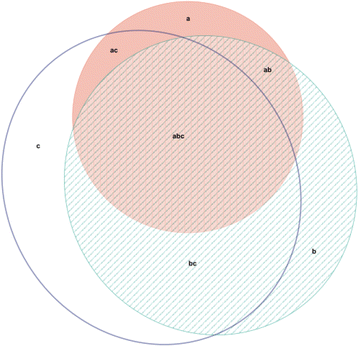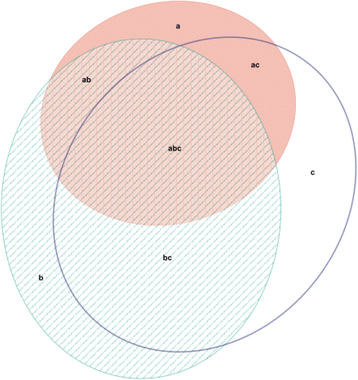Screening for anxiety and depression: reassessing the utility of the Zung scales - PubMed (original) (raw)
Screening for anxiety and depression: reassessing the utility of the Zung scales
Debra A Dunstan et al. BMC Psychiatry. 2017.
Abstract
Background: While the gold standard for the diagnosis of mental disorders remains the structured clinical interview, self-report measures continue to play an important role in screening and measuring progress, as well as being frequently employed in research studies. Two widely-used self-report measures in the area of depression and anxiety are Zung's Self-Rating Depression Scale (SDS) and Self Rating Anxiety Scale (SAS). However, considerable confusion exists in their application, with clinical cut-offs often applied incorrectly. This study re-examines the credentials of the Zung scales by comparing them with the Depression Anxiety Stress Scale (DASS) in terms of their ability to predict clinical diagnoses of anxiety and depression made using the Patient Health Questionnaire (PHQ).
Method: A total sample of 376 adults, of whom 87 reported being in receipt of psychological treatment, completed the two-page version of the PHQ relating to depression and anxiety, together with the SDS, the SAS and the DASS.
Results: Overall, although the respective DASS scales emerged as marginally stronger predictors of PHQ diagnoses of anxiety and depression, the Zung indices performed more than acceptably in comparison. The DASS also had an advantage in discriminative ability. Using the current recommended cut-offs for all scales, the DASS has the edge on specificity, while the Zung scales are superior in terms of sensitivity. There are grounds to consider making the Zung cut-offs more conservative, and doing this would produce comparable numbers of 'Misses' and 'False Positives' to those obtained with the DASS.
Conclusions: Given these promising results, further research is justified to assess the Zung scales ability against full clinical diagnoses and to further explore optimum cut-off levels.
Keywords: Depression anxiety stress scale (DASS); Depression/anxiety screening; Zung self-rating anxiety scales (SAS); Zung self-rating depression scales (SDS).
Conflict of interest statement
Authors’ information
Debra Dunstan Ph.D., M.Psych.(Clinical), M.Litt., B.Sc., Grad. Dip Phty., MAPS CClin., is a registered Clinical Psychologist and Physiotherapist; Associate Professor and Director of the Clinical Psychology Program; and, Deputy Head of School of Behavioural Cognitive and Social Sciences at the University of New England, Australia.
Ned Scott M.Psych.(Clinical), B.Psych.(Hons) is a registered Psychologist, Unit Coordinator and Clinical Supervisor within the Clinical Psychology Program of the School of Behavioural Cognitive and Social Sciences at the University of New England, Australia.
Anna Todd M.Psych.(Clinical), M.Sc.(Forensic Psychology), B.Sc.Psych.(Hons) is a registered Psychologist. She completed her Clinical Masters degree in Psychology at the University of New England, Australia in 2010.
Ethics approval and consent to participate
The study was approved by the University of New England Human Research Ethics Committee (Approval No: HE09/203). Participants gave their written informed consent to their involvement prior to any data collection.
Consent for publication
Not required as the manuscript does not contain individuals’ data.
Competing interests
The authors declare that they have no competing interests.
Publisher’s Note
Springer Nature remains neutral with regard to jurisdictional claims in published maps and institutional affiliations.
Figures
Fig. 1
Venn diagram illustrating overlap between diagnoses of depressive disorder on the PHQ (area a – pink ellipse), and positive screens on the DASS depression subscale (area b –green shaded ellipse) and the SDS with a revised cut-off: index scores of 55 and above (area c – clear ellipse). Figure produced using the eulerAPE software developed by Micallef and Rodgers [31]
Fig. 2
Venn diagram illustrating overlap between diagnoses of an anxiety disorder on the PHQ (area a – pink ellipse), and positive screens on the DASS anxiety subscale (area b –green shaded ellipse) and the SAS with a revised cut-off: index scores of 50 and above (area c – clear ellipse). Figure produced using the eulerAPE software developed by Micallef and Rodgers [31]
Similar articles
- Clarification of the cut-off score for Zung's self-rating depression scale.
Dunstan DA, Scott N. Dunstan DA, et al. BMC Psychiatry. 2019 Jun 11;19(1):177. doi: 10.1186/s12888-019-2161-0. BMC Psychiatry. 2019. PMID: 31185948 Free PMC article. - Norms for Zung's Self-rating Anxiety Scale.
Dunstan DA, Scott N. Dunstan DA, et al. BMC Psychiatry. 2020 Feb 28;20(1):90. doi: 10.1186/s12888-019-2427-6. BMC Psychiatry. 2020. PMID: 32111187 Free PMC article. - Poor performance of PHQ-9 and GAD-7 in screening clinical depression and anxiety among a large sample of Chinese children and adolescents.
Wang S, Lu J, Zheng G, He Y, Liu S, Xiang Y, Liu X, Wang X, Xiao Y. Wang S, et al. BMC Psychiatry. 2025 Mar 29;25(1):301. doi: 10.1186/s12888-025-06754-y. BMC Psychiatry. 2025. PMID: 40158158 Free PMC article. - A practical guide to using ratings of depression and anxiety in child psychiatric practice.
Pavuluri M, Birmaher B. Pavuluri M, et al. Curr Psychiatry Rep. 2004 Apr;6(2):108-16. doi: 10.1007/s11920-004-0050-8. Curr Psychiatry Rep. 2004. PMID: 15038913 Review. - A Narrative Review of Self-Reported Scales to Evaluate Depression and Anxiety Symptoms in Adult Obstructive Sleep Apnea Patients.
Velescu DR, Marc MS, Traila D, Pescaru CC, Hogea P, Suppini N, Crisan AF, Wellmann N, Oancea C. Velescu DR, et al. Medicina (Kaunas). 2024 Feb 2;60(2):261. doi: 10.3390/medicina60020261. Medicina (Kaunas). 2024. PMID: 38399548 Free PMC article. Review.
Cited by
- Anxiety, not regulation tendency, predicts how individuals regulate in the laboratory: An exploratory comparison of self-report and psychophysiology.
Burr DA, Pizzie RG, Kraemer DJM. Burr DA, et al. PLoS One. 2021 Mar 12;16(3):e0247246. doi: 10.1371/journal.pone.0247246. eCollection 2021. PLoS One. 2021. PMID: 33711022 Free PMC article. - The Psychological Health Status of Healthcare Workers During the COVID-19 Outbreak: A Cross-Sectional Survey Study in Guangdong, China.
Li Q, Chen J, Xu G, Zhao J, Yu X, Wang S, Liu L, Liu F. Li Q, et al. Front Public Health. 2020 Sep 18;8:562885. doi: 10.3389/fpubh.2020.562885. eCollection 2020. Front Public Health. 2020. PMID: 33042955 Free PMC article. - A correlation analysis on the postpartum anxiety disorder and influencing factors in puerperae with gestational diabetes mellitus.
Zeng X, Yan X, Yang Y, Peng Z, Wei S, Chen J, Wu F, Chen J, Zhao M, Luo C. Zeng X, et al. Front Endocrinol (Lausanne). 2023 Nov 27;14:1202884. doi: 10.3389/fendo.2023.1202884. eCollection 2023. Front Endocrinol (Lausanne). 2023. PMID: 38089633 Free PMC article. - Ameliorating effects and mechanisms of transcutaneous auricular vagal nerve stimulation on abdominal pain and constipation.
Shi X, Hu Y, Zhang B, Li W, Chen JD, Liu F. Shi X, et al. JCI Insight. 2021 Jul 22;6(14):e150052. doi: 10.1172/jci.insight.150052. JCI Insight. 2021. PMID: 34138761 Free PMC article. Clinical Trial. - Disease Prevention Knowledge, Anxiety, and Professional Identity during COVID-19 Pandemic in Nursing Students in Zhengzhou, China.
Sun Y, Wang D, Han Z, Gao J, Zhu S, Zhang H. Sun Y, et al. J Korean Acad Nurs. 2020 Aug;50(4):533-540. doi: 10.4040/jkan.20125. J Korean Acad Nurs. 2020. PMID: 32895340
References
- American Psychiatric Association . Diagnostic and statistical manual of mental disorders. 5. Arlington: American Psychiatric Publishing; 2013.
- First MB, Gibbon M. The structured clinical interview for DSM-IV Axis I disorders (SCID-I) and the structured clinical interview for DSM-IV Axis II disorders (SCID-II) New York: Wiley; 2004.
- Trull TJ. Clinical psychology. 7. Wadsworth Cengage Learning: Belmont; 2005.
Publication types
MeSH terms
LinkOut - more resources
Full Text Sources
Other Literature Sources
Medical

